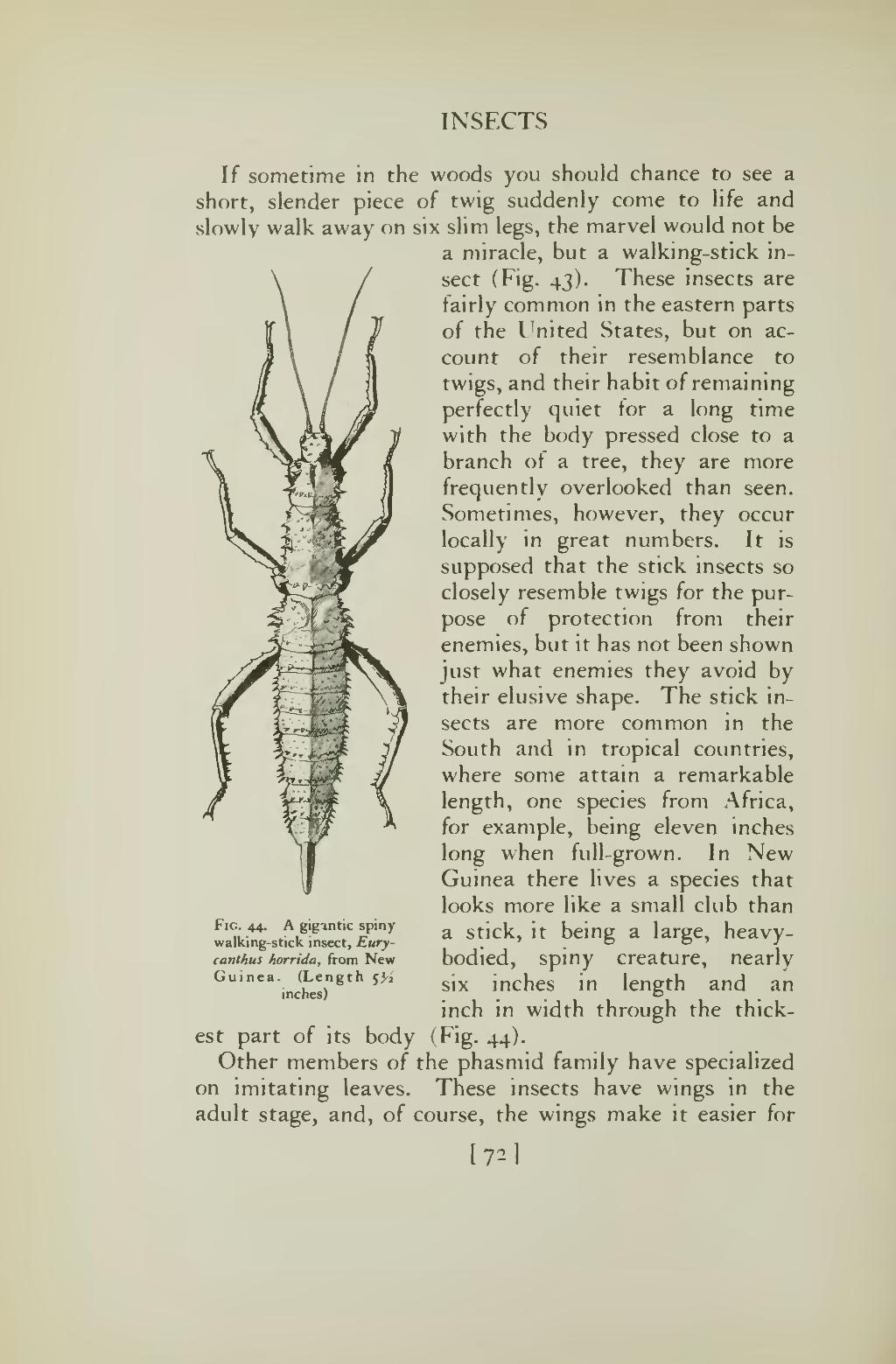If sometime in the woods you should chance to see a short, slender piece of twig suddenly come to lire and slowiy walk away on six slim legs, the marvel would not be a miracle, but a walking-stick in- sect (Fig. 43). These insects are fairly common in the eastern parts of the United States, but on ac- count of their resemb]ance to twigs, and their habit ofremaining perfectly quiet for a long time with the body pressed close to a branch of a tree, they are more frequently overlooked than seen. Sometimes, however, they occur locally in great numbers. It is supposed that the stick insects so closely resemble twigs for the pur- pose of protection from their enemies, but it has not been shown just what enemies they avoid by their elusive shape. The stick in- sects are more common in the South and in tropical countries, where some attain a remarkable length, one species flore Affica, for example, being eleven inches long when full-grown. In New Guinea there lives a species that looks more like a small club than FIG. 44- A gigantic spiny walking-stickinsect, Eury- a stick, it being a large, heavy- canthus horrida, from New bodied, spm.y creature, nearly Guinea. (Length g3"? SiX inches m length and an inches) inch in width through the thick- est part of its body (Fig. 44)- Other members of the phasmid family have specialized on imitating leaves. These insects have wings in the adult stage, and, of course, the wings make it easier for
[7"-1
THE
